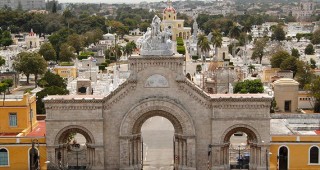 (+53)7830 - 4517
(+53)7830 - 4517Chinese immigrants were promised rivers of gold on their arrival in Cuba, but in reality they were confined to barracks in abject poverty, where conditions were brutal. Many of them thought of returning to their homeland, but given that the chances of that happening were close to none, a large number of them committed suicide. These deaths became a problem for Spanish authorities, known for being racist and elitist, and Catholic Church members, which opposed to the idea of being buried next to Chinese heretics.
Construction works for this cemetery began in 1892 at Finca La Torre, property of Francisco Embil, near Necrópolis de Cristóbal Colón. Funds were collected among Chinese immigrants living in Havana’s Chinatown and their incipient community of businessmen.
Every Sunday prior to April 5, the Chinese community celebrates the Day of Clarity, when, according to tradition, the gates to the Realm of the Dead are open so you can share with your late relatives and friends. Rites are performed and food, flowers and incense are offered to the diseased.
This cemetery was declared National Monument in recognition of its peculiarity and the importance of the Chinese heritage.
Dating from the 19th-century Qing dynasty, this Chinese cemetery has Asian-style lion statues and brightly coloured burial chapels, as well as Western classical and Christian influences. Although not usually open to the public, visits can be arranged (groups only) by contacting the offices of Cementerio Colón.















 Eclectic
Eclectic


